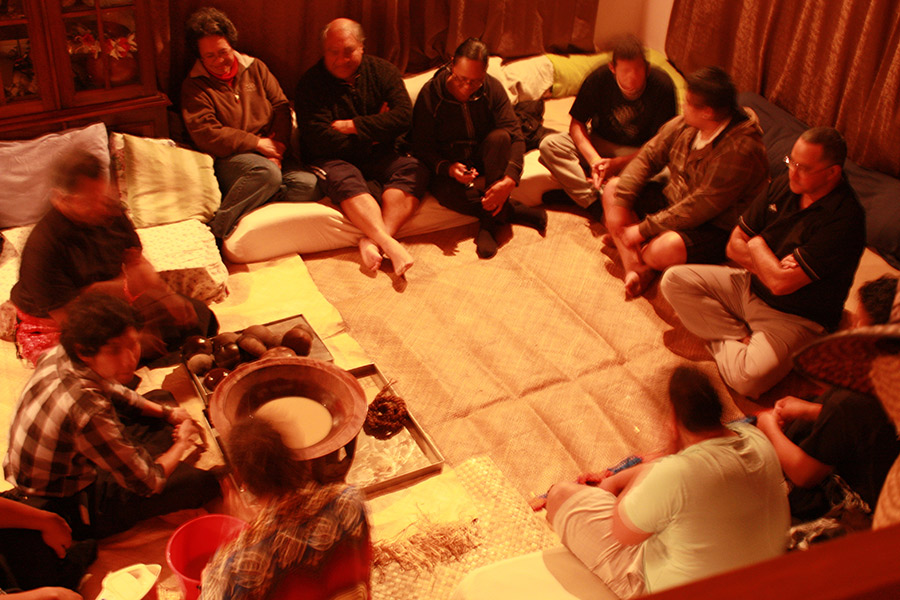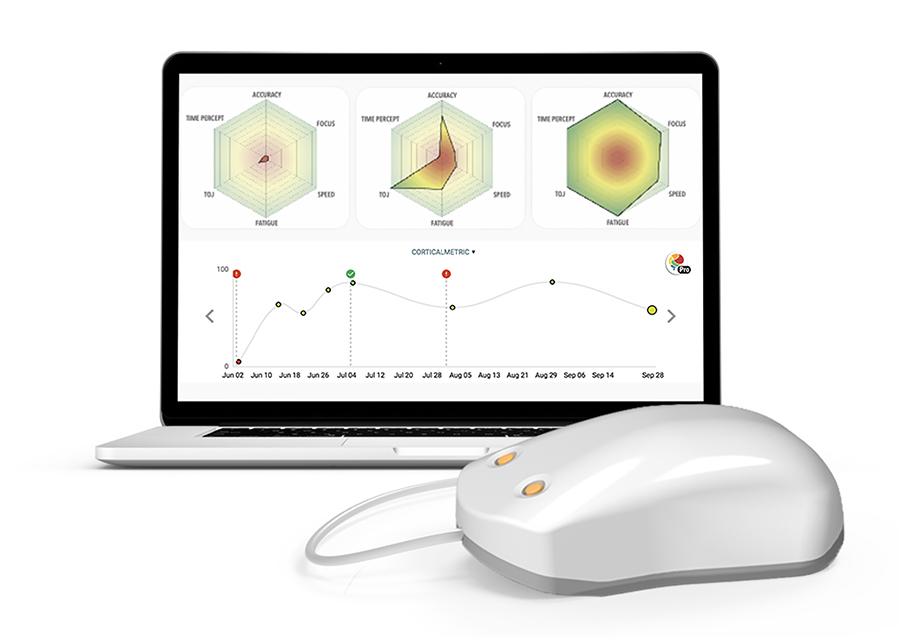Traditional kava-drinking, cognition, and driver fitness
Kava, or ‘the plant of the gods’, grows widely across tropical Moananuiākea (the Pacific). Used in traditional medicine, its roots are also ground and steeped in water to make a drink with relaxant effects. Kava has deep cultural significance, but because it is customarily consumed in large quantities over several hours, concerns have been raised about its effects on driver safety. Dr ‘Apo’ Aporosa, a Research Fellow at the University of Waikato in New Zealand, has studied the impact of traditional kava use on cognition and its implications for driver fitness.
Kava is a tropical shrub which was given its botanical name, Piper methysticum, meaning ‘intoxicating pepper’, by Johann Forster who voyaged to the Pacific with Captain Cook in the 1770s. Experts believe that Foster’s naming of kava as an intoxicant is problematic. Kava’s effects are different from alcohol or recreational drugs such as cannabis, and its pharmacology is more complex than previously thought.
Dr ‘Apo’ Aporosa, a Research Fellow at the University of Waikato in New Zealand, has more than 20 years’ experience as a development practitioner, school teacher, kava farmer and researcher in Fiji, from where his mother’s family originates. He distinguishes between traditionally influenced kava used as a beverage in culturally informed relational settings, and its use as a natural health supplement taken in tablet or capsule form.
The psychoactive compounds that kava contains, ‘kavalactones’, act on receptors in the brain and central nervous system and have a similar effect to Benzodiazepine. This led to kava tablets or capsules being marketed as a treatment for anxiety, although several countries banned their use through safety fears, which also resulted in the stigmatisation of kava as used traditionally.
Following two safety reviews, the World Health Organization (WHO) affirmed that kava has an acceptable low level of risk when mixed with water and consumed in its traditional beverage form. However, some concern remains about kava’s effect on driver fitness. Anecdotally, police in several Pacific nations report stopping increasing numbers of drivers who appear mildly intoxicated, although show negative breath screening tests. Police suspect that kava-drinking may be responsible.

Aporosa’s latest research vitally addresses these concerns, which are important as traditionally influenced kava use is increasing in the Pacific diaspora and among non-Pacific peoples. Specifically, he set out to measure the impact that kava, when consumed at high volumes as is typical in naturalistic settings, has on drinkers’ cognition and neurological functioning, with particular relevance to its impact on driver fitness. His research was conducted according to a recognised framework that ensures that Western-developed test-based methods are applied ethically and equitably when used with Pacific peoples.
Methodology
Aporosa’s research was conducted by gathering quantitative and qualitative data at an organised faikava, or a culturally informed kava-drinking space. Participants were taken to that faikava where they sat cross-legged on woven mats on the floor, engaged in talanoa (a Pacific form of dialogue) and consumed kava over a six-hour period.
Kava, when consumed in naturalistic settings over many hours,
has unique but subtle effects.
The kava was prepared traditionally from dried powdered kava root and basal stumps. It was also served traditionally from a kumete (wooden kava bowl) and poured into bilo/ipu (cups made from half coconut shells), in 100ml (0.2 pint) portions at a rate of six portions per hour.
Thirty-nine participants took part in the testing, split into two groups of 20 kava-consumers and a non-kava-consuming control group of 19. Participants were a mix of Pacific and other ethnicities and all were male, as males are more likely to drive post-kava use. The average age of participants was 34. All were instructed on how to prepare for the testing and asked to abstain from beverages containing alcohol, caffeine, and kava (if in the active kava-using group) before the test.


In line with Pacific culture, sessions began and ended with welcome and farewell formalities, and the social interaction that took place was guided and informed by the respect-based values that underpin faikava. The kava-drinking participants drank 3.6 litres (7.6 pints) each of kava during testing. Snacks such as fruit and nuts, known as kava chasers, were also served.
Throughout the sessions, participants’ cognitive faculties were tested using the Brain Gauge psychometric testing tool – a computer mouse-like device that tests brain health by analysing sensory perceptions between the fingertips and brain. The six attributes measured were: speed, that is reaction time and fatigue; accuracy and how well the brain differentiates between sensations; temporal order judgement, that is sequencing, or how well the brain tracks the order of events; timing perception, or how well the brain tracks time; plasticity, or how well the brain reacts and adapts to changes; and finally focus and concentration. Participants’ responses were measured before the sessions, halfway through at three hours, and at the end following six hours of kava drinking.
Results
Following testing, comparisons were made between the data of the kava drinkers and non-consumers, with the results showing that the kava drinkers had a negative change in cognitive function to only one of the six attributes measured by the Brain Gauge – temporal order judgement (TOJ).

Contrary to the study’s hypothesis, the data showed no impairment in the five other cognitive faculties measured, namely focus, accuracy, timing perception, plasticity, and fatigue. The impairment to temporal order judgement was significantly high. This suggested that following six-hours of kava drinking, there is a very high level of impact to sequencing. This is associated with decision-making and information processing linked to the brain’s ‘executive functions’, which are crucial to safe driving.
In addition to the Brain Gauge measurements, the research team made observations about participants’ behaviour. They noted that after four hours of kava drinking, the kava-using participants appeared ‘somnolent, with slowed speech and slightly altered pronunciation and a slower psychomotor response’.
Changes were also noted in participants’ focus. The control group appeared less focused on the assessment tasks as the sessions progressed, while the kava drinkers appeared more relaxed at the beginning but concentrated more as the assessment tasks progressed. Although the measurement was small, this finding of increased focus by kava-drinking participants was supported by the Brain Gauge scores.
Implications
The results suggest that kava modifies cognitive function linked to temporal order judgement, but this effect is very different to most recreational drug substances. Aporosa comments: ‘This study clearly shows that kava, when consumed in naturalistic settings over many hours, has unique but subtle effects. These are vastly less impactful on cognitive faculties, and very different to the effects of alcohol, cannabis, hallucinogens and narcotics.’

However, this does not imply that kava has no impact on driver safety. The study reveals an anomaly in that, after a typical six-hour kava session, kava-drinkers may experience a small increase in focus which may enhance a driver’s alertness and so improve driver safety. Yet the data also shows that over the same period kava drinkers experience a significant impairment of temporal order judgement, which may affect their decisionmaking and compromise safe driving.
The common term used to capture kava’s effects – kava intoxication – is both misleading and incorrect.
Aporosa discussed the anomaly with psychopharmacology experts, but they were unable to explain the findings. They concluded that understanding of the effects of traditionally influenced kava use is new and evolving, and that understanding the brain’s ‘executive functions’ is also highly complex. There is therefore a ‘kava-science knowledge gap’.
Aporosa’s latest study confirms his earlier research that kava acts differently from alcohol and other recreational drugs. He explains: ‘While kava has significant impact on temporal order judgement, no interference occurs to most of the cognitive faculties disrupted by alcohol and cannabis use. The findings also show that kava effect cannot be described as hallucinogenic … and cannot be described as narcotic.’ He adds: ‘The common term used to capture kava’s effects – kava intoxication – is both misleading and incorrect.’
More research needed
Most research into kava consumption and its effects on cognition has so far been based on the consumption of kava in tablet form. Aporosa argues that kava tablets are a ‘vastly different substance to natural kava consumed in faikava settings’ and more research is needed into its use as a traditional beverage.

Aporosa’s finding that traditionally influenced kava use may disrupt temporal order judgement and compromise driving ability, though in a different way from alcohol or the use of recreational drugs like cannabis, is significant and timely.
Aporosa explains, ‘With kava being such a dominant aspect of our identity, underpinning many of our cultural practices, and facilitating relational connection, researching kava and linking it to potential negative implications is sensitive. However, at the same time, respect forms the basis of our cultural values, so if driving after kava may endanger others, we need to think about this and change behaviour when necessary.’
As part of his research Aporosa has produced a multi-lingual and culturally appropriate brochure linked to Pacific respect-based values to inform drinkers at faikava venues of the potential risks involved in driving after attending lengthy kava sessions.
What is needed now, Aporosa argues, is further research into the psychopharmacology of kava as used in traditionally influenced volumes and settings. He comments: ‘Although this study generated new neurological understanding concerning kava uses, it also highlighted gaps in current kava psychopharmacology knowledge, particularly around how and why kava has an impact on selected cognitive facilities, but not others.’ He concludes: ‘That lack of understanding essentially hampers further kava-drinking research, except for learnings likely to derive from testing kava users in a driving simulator.’
Personal Response
How receptive have kava-drinkers been to your leaflet informing them of the risks involved in driving after attending kava sessions?
The reaction has been mixed, ranging from exceptionally positive through to highly critical of both the brochures and research. Many critics felt kava effects were almost non-existent, especially when compared with alcohol, and therefore they felt safe to drive. Others felt the research findings could draw unnecessary attention to kava, and lead to regulatory controls that would have a huge impact on our culture and practices, not to mention push people toward alcohol and its socio-cultural impacts; disruptions not caused by kava. Yet others felt that suggesting kava caused harm vicariously criticised our culture and practices. As I said earlier, this is a sensitive issue, one I also understand as a Fijian and a kava user.